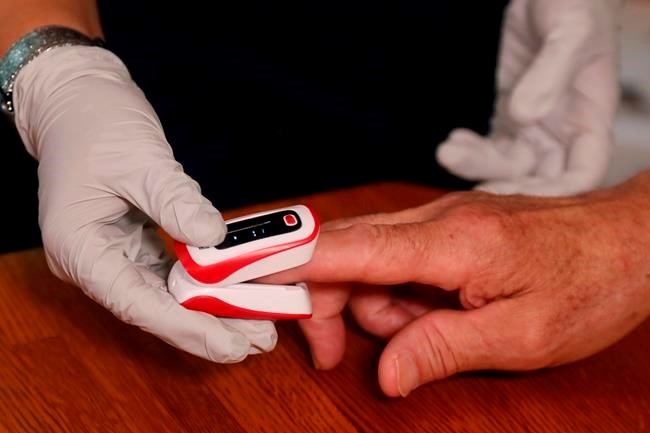TORONTO — One saving grace amid the devastation of COVID-19 has been that the vast majority of those infected are able to recover at home, allowing hospitals to cope with what would otherwise have been a system-crushing onslaught of ill, contagious patients.
Of the more than half-million cases of COVID-19 where hospitalization status is known, Canadian data show roughly 7.8 per cent of patients have needed hospital admission. Of those, fewer than one-in-five needed intensive care and an even smaller fraction required mechanical ventilation.
To ensure the huge number of patients who don't need a hospital bed are not simply left to their own devices, facilities have set up systems to care for them remotely.
"We don't want people to feel abandoned," said Dr. Nick Daneman, a clinician scientist and division head of infectious diseases at Sunnybrook Health Sciences Centre in Toronto.
"As much as we didn't want the hospital system to be overwhelmed, we didn't want individual patients to be overwhelmed; to be given a diagnosis of COVID can be awfully scary."
To that end, Sunnybrook developed a program last year called the COVID-19 Expansion to Outpatients — COVIDEO — to deal with those with mild to moderate symptoms. The program enables a hospital team to keep tabs on patients via video or phone.
COVIDEO allows patients and caregivers 24/7 access to a physician on call and allows medical personnel to monitor their progress. The idea, Daneman said, was to provide a therapeutic presence, reassurance, a monitoring plan and a point of contact for emergencies.
"If your symptoms worsen or if you are not feeling well, someone from our team will check on you by phone or a video call," the hospital says.
Dr. Marko Mrkobrada, an internal medicine specialist in London, Ont., said the initial impetus for the London Health Science's Centre to set up its Urgent COVID-19 Care Clinic was to give out-patients an oximeter — devices that measure blood-oxygen levels via an attachment to a finger.
The meters allow for early detection of those patients whose conditions are getting worse or are likely to do so. If oxygen levels fall, patients can be admitted directly, bypassing the emergency room and avoiding rushed intubation, which increases the risk of spreading COVID-19 in the facility.
Now, positive patients who are referred by public health can consult with the London clinic over the phone. They get pager access to a doctor, and talk daily with a nurse. Higher risk patients are couriered an oxygen monitor.¬Ý
"That alone has been incredibly reassuring to the patients," Mrkobrada said. "It is really reducing the chance of them having to go to the emergency room."
Another plus, he said, was that it allows for stable patients, who might otherwise be on oxygen in the intensive care unit for days, to go home.
"We've been able to actually use the clinic to discharge those patients safely on oxygen to their house," Mrkobrada said.¬Ý
Oxygen meters have also proven valuable for those COVID patients who may not report shortness of breath despite having abnormally low oxygen levels — a phenomenon known as "silent hypoxia" or "happy hypoxemia."
"Asking someone if they're short of breath only has 50 per cent sensitivity at detecting hypoxemia," Daneman said. "It's going to miss half of the people with low oxygen levels that might need to come into hospital."
Ensuring higher-risk patients have ready access to the monitors is also a key part of Sunnybrook's remote program. The devices, Daneman said, should be standard for any higher-risk patient with COVID-19 being treated in the community.
Data from the Ontario Ministry of Health show more than two dozen remote-management programs are now in place across the province.
"These systems help COVID patients and other vulnerable patients receive appropriate clinical care and monitoring in the community," the ministry said on Thursday. "(They) also reduce the risk of infection among health-care workers."
Thunder Bay Regional Health Sciences Centre in northern Ontario recently started its COVID-19 Remote Patient Monitoring Telehomecare Program, which relies on nurses during the day. Patients use a computer or phone application to report symptoms twice daily.
This report by The Canadian Press was first published on Feb. 4, 2021.
Colin Perkel, The Canadian Press




